Why Does Power Ranch's Legal Counsel Continue to Skim Around The Truth?
As a Power Ranch Homeowner, you may have received the following correspondence on May 8th, 2024, sent by CCMC, written by Power Ranch’s attorney, Curtis Ekmark, presented, and sold to the Board for review and approval. While WHAT was said is not entirely incorrect, but HOW each sentence was pieced together has painted a FALSE reality for homeowners and in our opinion is deceptive. Ever heard of the terms manipulation and gaslighting? There is something seriously wrong here. It is important for homeowners to ask questions, and demand answers from our Board!
For those new to our community and what has been happening since homeowners began discovering inconsistencies around December 2023, Curtis Ekmark is the attorney currently representing Power Ranch. The Management Company, CCMC and Curtis Ekmark from CHDB, have represented Power Ranch and we (the Association) have not received bids for management or legal services for over 25 years. GET CAUGHT UP HERE.
WARNING: (This is a long one. Be sure your animals and children are fed prior to reading this article. A MUST READ!)
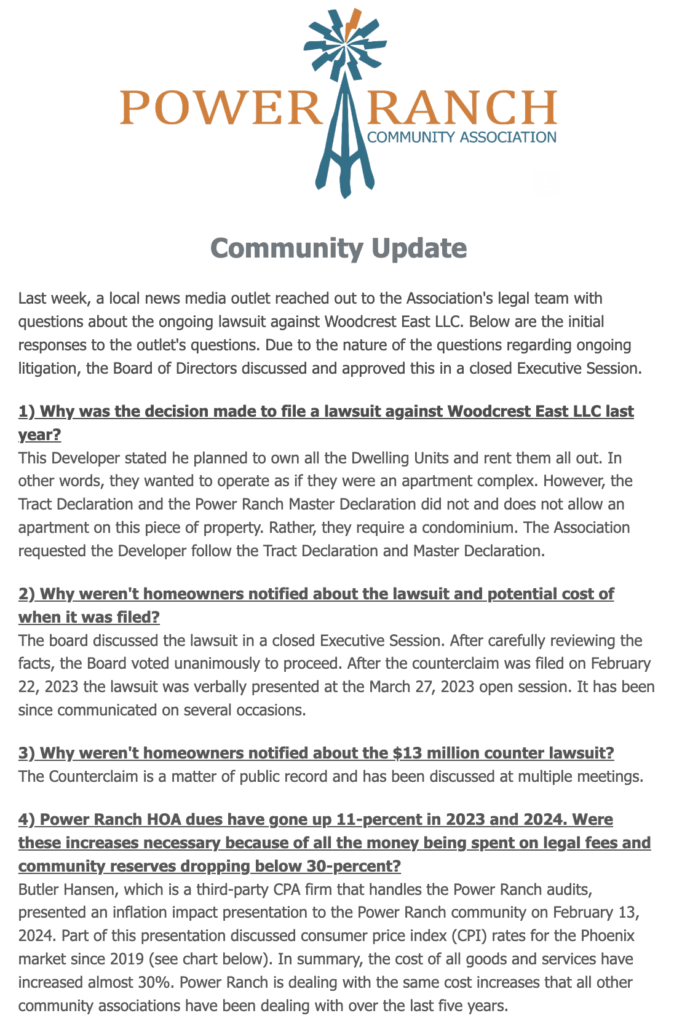
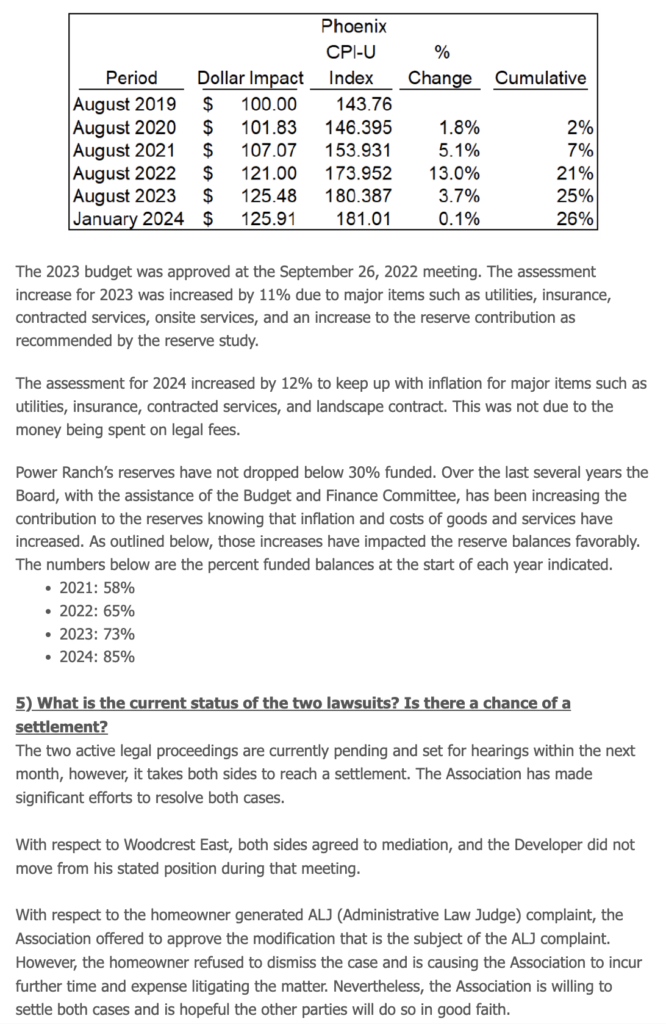
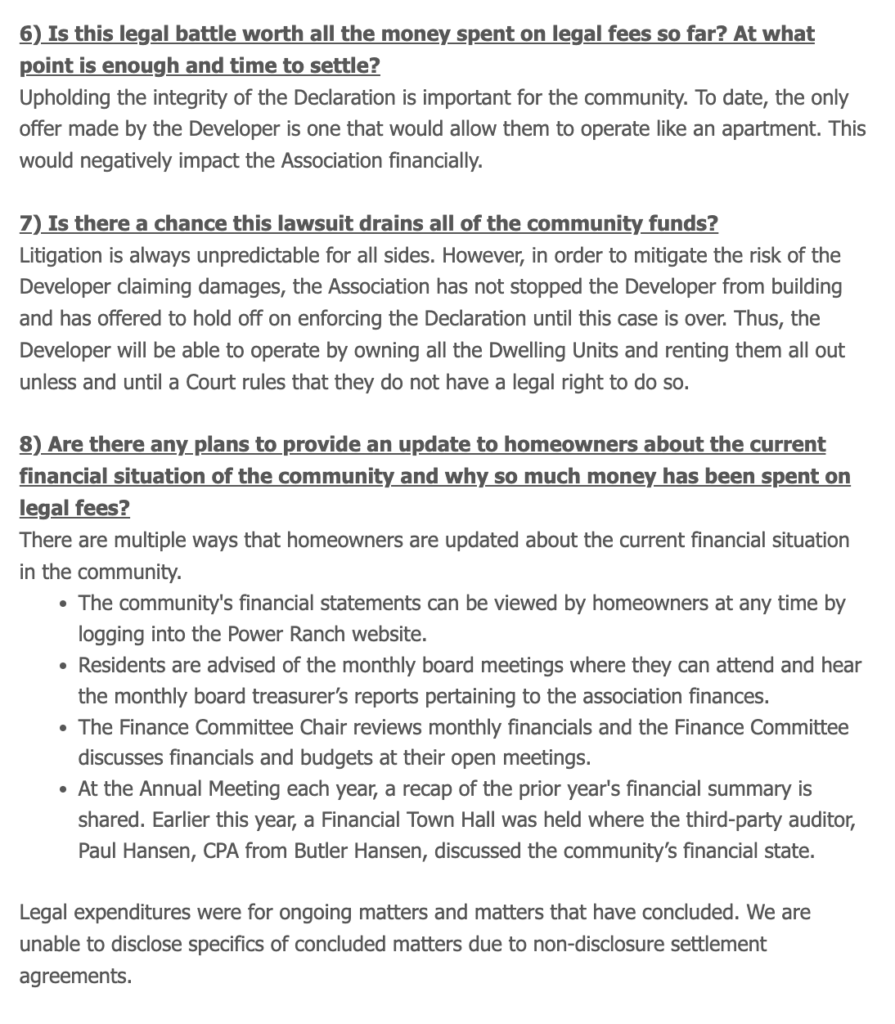
For starters, it is mentioned in the first paragraph of the email that the answers provided were “discussed and approved” in a closed Executive Session. As you may already know, ARS 33.1804 requires that any meeting that is CLOSED must be noticed to all members. Did you receive a notice stating that there would be a closed executive session for May 6th or 7th? We checked with several homeowners who receive regular communication from CCMC and confirmed that no communication was sent regarding the closed executive session, “secret meetings” are prohibited in the state of Arizona, per open meeting laws, here is the link where you can fact-check this information.
Let’s fact-check each answer, shall we? Because as homeowners, we are really over this attorney playing word-games and insulting our intelligence. It is time homeowners see and understand what is truly happening here. It will help you answer the question of why your dues continue to increase when the pandemic was over almost 3 years ago!
We also took the time to ask the Developer, Woodcrest East to respond to the answers provided by the Power Ranch’s attorney. You can find them below.
The Reporter's Question #1: Why was the decision made to file a lawsuit against Woodcrest East LLC last year?
POWER RANCH’S ATTORNEY RESPONSE:
“This Developer stated he planned to own all the Dwelling Units and rent them all out. In other words, they wanted to operate as if they were an apartment complex. However, the Tract Declaration and the Power Ranch Master Declaration did not and does not allow an apartment on this piece of property. Rather, they require a condominium. The Association requested the Developer follow the Tract Declaration and Master Declaration. “
Well, well, well, we could not help but wonder which one is it that Curtis Ekmark is trying to accuse the Developer of claiming? The Tract Declaration IS specified as a condominium use and Woodcrest East is going to be operating as a condominium. Our question to Ekmark… is Woodcrest East claiming they are an apartment development or are you intentionally confused about what an apartment complex is? We believe Ekmark is a smart attorney and definitely not confused but intentionally dragging out litigation efforts. Nowhere have we found that Woodcrest East claims to be an Apartment Development. Woodcrest East has said it multiple times, that they are and have always been zoned as a condominium development, which according to Power Ranch’s CCR’s have NO rental restrictions. End of story. As you can see, below, the Developer’s answer is similar to ours. Feel free to check out the deposition transcripts here. It is truly believed that most homeowners who reside in Power Ranch, do not wish to have more rentals in our community; however, for those who believe we can restrict one entity from renting their condos must blame our CCR’s, not a homeowner or even a Developer who is abiding by our CCR’s. As homeowners and members of the Association, through majority vote, at some future time past this lawsuit, can amend our CCR’s to include rental restrictions but at this time, there are NO RENTAL RESTRICTIONS and this is where Power Ranch will lose this lawsuit.
WOODCREST EAST’S RESPONSE:
Woodcrest East is delighted and honored to be developing luxury condominiums in Power Ranch. Power Ranch is among the most successful master planned communities in the history of Arizona.
As an owner within Power Ranch, I thank each of the Board Members and those serving on the various Board committees for dedicating your time and talents to helping and improving Power Ranch. We all want Power Ranch to continue to be an excellent place to live. I operate under the belief that board members are striving to act in the best interests of Power Ranch and follow Arizona law and the Power Ranch CC&Rs, even if such laws or rules may be contrary to their personal views.
I am, however, perplexed by this litigation.
I sincerely ask the Board and the entire Power Ranch community this simple question:
“What specific provision in Arizona law or the Power Ranch CC&Rs is or will be violated by Woodcrest East, in renting out its condo units?”
I have asked this question many times to the Power Ranch Board and its attorneys, and I have not received a response. One would think that in a multi-million-dollar litigation, the Power Ranch Board or their attorneys could point to some specific statute or section in the Power Ranch CC&Rs that they claim are or will be violated; but they haven’t, and they cannot.
I’ve answered detailed FAQs (LINK HERE) on this topic. In the FAQs and in this comment below, you’ll notice that I cite to specific sections of Arizona law and the Power Ranch CC&Rs. Interesting, we don’t see the Power Ranch Board or their attorneys doing the same thing. That should be a red flag.
As I’ve stated publicly many times, our original intention in 2019 when Bela Flor (my company) purchased Woodcrest East was to build three-story condominiums for sale. But Covid-19 and the resulting shocks within the construction industry had a severe impact on this project. We had to find ways to reduce costs, so we changed these to two-story condominiums, which is what is under construction now. In analyzing the market, we realized that these smaller condominium units (some as small as 750 square feet) could not be sold at or above the cost of construction. When is the last time you saw a house or condominium in Gilbert for sale that is only one bedroom and around 750sf? Gilbert is not Manhattan.
Just for fun, we wanted to see what the home price difference truly was based on Mr. Huish’s comment…
Based on Realtor.com’s website, a 1 bedroom/1 bath under 890 SF did not exist at the time of the search, however, a 2 bedroom/2bath would cost you around $340k in Gilbert versus a 750 SF condo in Manhattan at $1.2M. Real estate values are based on location and a 1 bedroom 1 bath in Gilbert, AZ just does not appear to be a profitable investment.

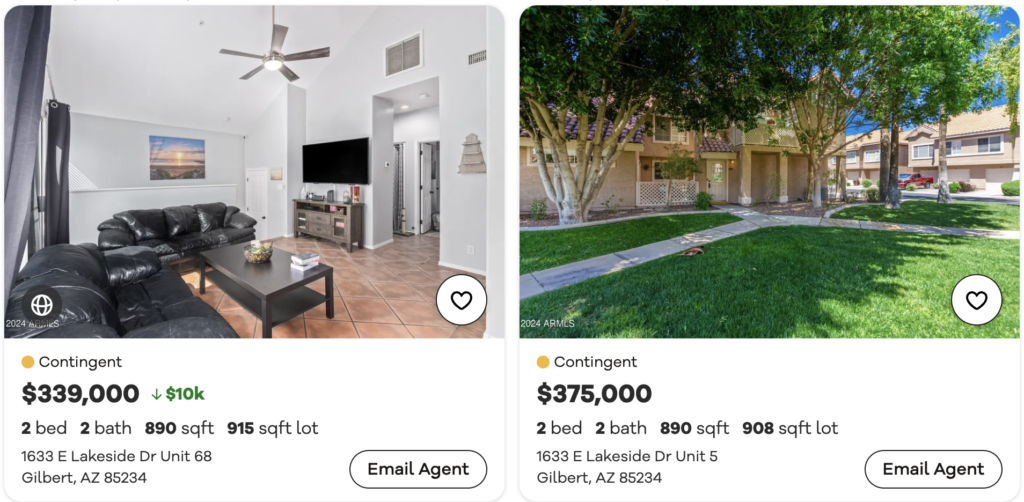
WOODCREST EAST’S RESPONSE (continued):
I knew when I purchased Woodcrest East that condominiums could be sold or leased. Those are the property rights that Bela Flor acquired when purchasing the Woodcrest East property. Prior to purchasing the property, together with my attorneys, we reviewed the 2019 Power Ranch CC&Rs and the 2007 Woodcrest CC&Rs to be sure. As you’ll see in my explanation below, it is clear that homes, townhomes and condominiums in Power Ranch can be leased. I knew I had that flexibility before purchasing Woodcrest East.
In 2016-2018, my company built a condominium project that is now owned and leased 100%, called Bella Victoria. (www.bellavictoria.com). In that project, I became more familiar with the Arizona statutes and rules concerning condominiums. Woodcrest East is no unique: there are other condominium projects in Arizona, including those within master associations, that are owned and 100% leased.
Bela Flor has taken a project that sat vacant for 11 years, and is building luxury condominium units, that will in my opinion become one of the gems of Power Ranch. Our original plan was to sell three-story condominiums, but now with smaller two-story condominium units, we realistically cannot sell these, and so we’ve changed to gated rental project.
I invite you to tour Woodcrest East when construction is complete.
For those that would like a more detailed explanation of my comments to the Power Ranch Board’s answer to Question 1, please read on:
- It is beyond debate that Woodcrest East is a condominium development. Two Power Ranch board members (the president and finance chair) have testified as official representatives of Power Ranch in this litigation that it is. In 2005 a Tract Declaration was filed declaring Woodcrest (both East and West) to be a condo development. Nothing has changed in the last 19 years. There are numerous documents publicly available on the Maricopa County Recorder’s Office’s website and the Arizona corporation commission website, establishing Woodcrest East as a condominium. Yet, the statement from the Power Ranch Board hints (without outright saying) that somehow, Woodcrest East is NOT a condominium. This type of sophistry is gamesmanship.
A condominium is defined by Arizona State law. The Woodcrest East project satisfies all legal requirements to qualify as a condominium under ARS 33-1202(10). So, it is wrong to suggest or hint that Woodcrest East is not a condominium.
- Under Arizona Law (which takes precedence over contrary town or association ordinances or rules), in planned communities (such as Power Ranch HOA) or within a condominium (such as Woodcrest East), the owner of any home or condominium unit may use that member’s property as a rental property “unless prohibited in the declaration and shall use it in accordance with the declaration’s rental time period restrictions.” (See A.R.S. 33-1806.01; A.R.S. 33-1260.01).
Please look up these Arizona statutes and confirm for yourself. These statutes state that unless “prohibited in the declaration” [i.e., the CC&Rs], condos can be rented, whether someone owns one, four, 12 or 120 condominiums.
Arizona law trumps the Power Ranch CC&Rs. For rentals to be prohibited, there would need to be a very clear rental prohibition in the Power Ranch CC&Rs. No such prohibition exists.
Please excuse the repetition, but I continue to see misinformation and dissembling on this topic:
Woodcrest East is a condominium development, and condominiums can be rented.
That really is the end of the story.
As of the date of this article, there are currently 15 homes and/or condos listed in Power Ranch for rent. Just to confirm that rentals are permitted in Power Ranch, and in accordance to our CCR’s.
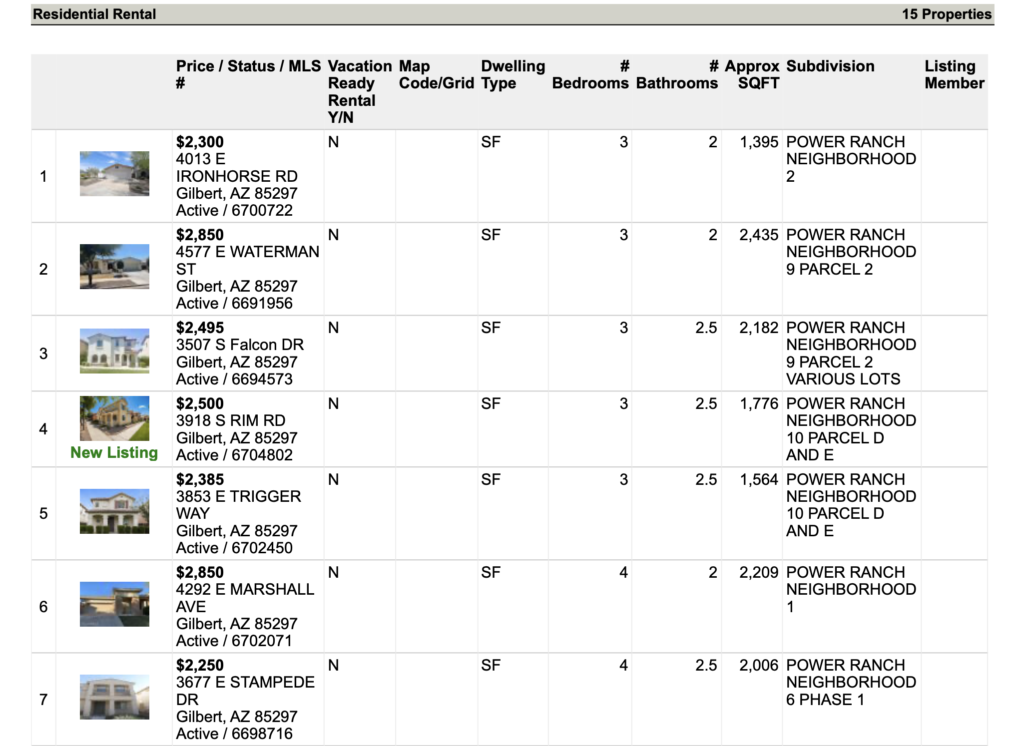
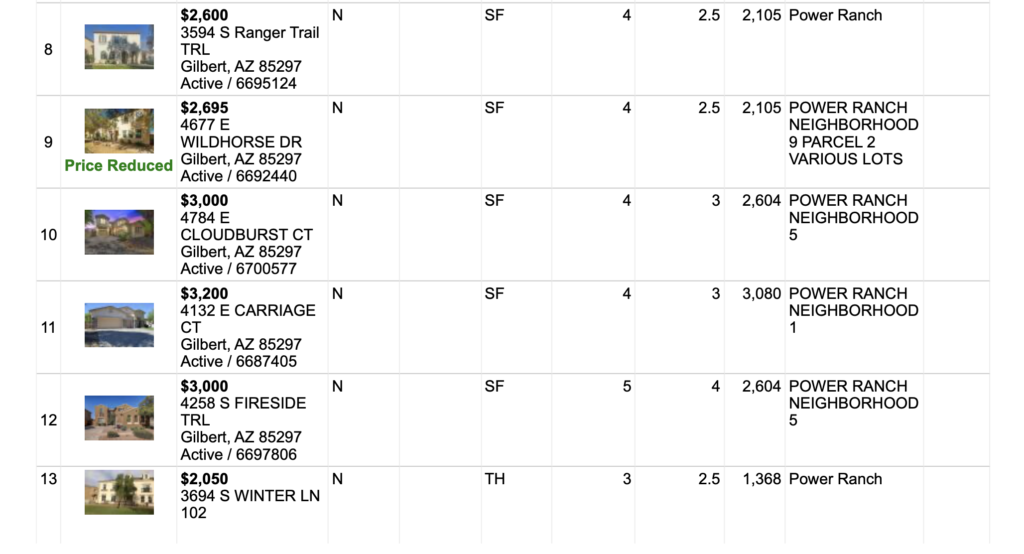

WOODCREST EAST’S RESPONSE (continued):
- There are no rental prohibitions in the Power Ranch CC&Rs (available on the Power Ranch HOA website). You already know this because hundreds of Power Ranch residents currently rent their homes, townhomes and condos. As noted above, Arizona law provides that condominiums can be rented unless prohibited by the association CC&Rs. Thus, for Power Ranch to prevent condominium rentals there must be a specific and clear rental prohibition in the Power Ranch CC&Rs. (We know that is not the case because (i) we have reviewed the CC&Rs, and (ii) condominiums are currently being rented in The Knoll’s, for example, which is part of the Power Ranch community.)
This continues to be a question for the Board: “what specific provision in the Power Ranch CC&Rs prohibits Woodcrest East – a condominium development – from renting out its units?” You will not receive a clear answer. What you may hear is something like the answer to Question 1 above, “Well, Woodcrest East is trying to operate as if they are an apartment.” That’s a non-answer. Please explain the specific section in the Power Ranch CC&Rs that is being violated or would be violated through renting condominiums.
In fact, the Power Ranch CC&Rs (filed on October 1, 1999 – nearly 25 years ago) contains sections that permit condominiums (and homes and townhomes) to be rented. While not required under Arizona law, this is clear evidence that condos can be rented in Power Ranch. See, for example:
- Section 4.4.1. [Explains that no trade or business may be conducted on any Lot. And then it states:] “The leasing of an entire Dwelling Unit by the owner thereof shall not be considered a trade or business within the meaning of this section.”
- Section 4.4.2. “No portion of a Dwelling Unit but for the entire Dwelling Unit on a Lot may be rented, and then only to a Single Family lessee from time to time by the Owner….”
- The Power Ranch Board, in its response to Question 1, states that “they [Woodcrest East] wanted to operate as if they were an apartment complex. However, the Tract Declaration and the Power Ranch Master Declaration did not and does not allow an apartment on this piece of property.”
This statement is incorrect.
Woodcrest East is a condominium development, and it is operating as a condominium development and condominiums can be rented.
Since Power Ranch will not cite provisions in its own CC&Rs, let me at least cite a few other sections that are helpful to this conversation:
Section 1.3 of the Power Ranch CC&Rs is titled “Apartment Development.” Woodcrest East is NOT seeking to be an “Apartment Development.” Look up that section and you will see that to be an “Apartment Development” requires approval by the Power Ranch “Design Review Committee or otherwise.” Woodcrest East has not received that approval and is not asking for that approval. Power Ranch attempts to say that Woodcrest East is doing something that it expressly is not doing! This is a classic red herring argument.
To this end, I say to the Power Ranch Board: please stop transmitting misinformation about Woodcrest East. You cannot have your own board members testifying in depositions that Woodcrest East is a condominium, and then claiming Woodcrest East is not a condominium in email blasts to the Power Ranch community.
- The Power Ranch Board apparently likes to use a variety of definitions for apartments, including “apartment,” “apartment complex,” “Apartment Development,” and “Rental Apartments.” Let’s please use the definitions in the Power Ranch CC&Rs, so that we do not risk misleading Power Ranch residents.
You’ll notice in the carefully worded answer to Question 1 by the Power Ranch Board (I assume the Board prepared that answer, but I do not know that) that the terms “Apartment Development” and “Rental Apartments” (defined terms in the Power Ranch CC&Rs) are not used! Instead, Power Ranch uses the term “apartment complex” and “apartment” which are not defined term in the CC&Rs. Why does Power Ranch use these undefined terms, and why not use the specific defined terms of the Power Ranch CC&Rs? That is a question for the Power Ranch Board, but I assume it is because the Power Ranch Board cannot point to any violation of its own CC&Rs in this litigation.
- Let’s review Section 1.45 of the Power Ranch CC&Rs, which reads in full:
“Rental Apartments” shall mean four (4) or more Dwelling Units within a building under single ownership, each of which is designed and utilized, otherwise than as a hotel or on some other transient basis, for rental or leased residential purposes to non-owners on a non-cooperative basis. This term is intended to include rented or leased apartments in the typically regarded sense as of the date hereof, and it is not intended to include unusual or atypical arrangements or any arrangements whereby the apartment occupant is, directly or indirectly, an owner or beneficiary of ownership in his apartment or whereby he occupies his apartment pursuant to some form of reciprocal use agreement, irrespective of whether any such arrangements may otherwise fall within the aforesaid definition.
In this Section 1.45:
Do you see any mention of the defined term “Apartment Development”?
Do you see anything that connects the definition of “Apartment Development” to “Rental Apartments”?
Do you see any mention of “condominiums”?
Do you see anything that would suggest that there is a rental restriction for condos?
Do you see anything that states that if you are “Rental Apartments” you cannot also be something else?
Do you see anything that requires the Power Ranch Board to approve “Rental Apartments”?
Do you see anything that says you can own three condo units (or “Dwelling Units”) in a building and rent them, but if you own five or more condo units in a building you cannot rent them?

To be sure Mr. Huish’s statements and questions were accurate, here is the CCR’s language regarding Section 1.45. To put simply, it clearly states that “This term is intended to include rented or leased APARTMENTS…” Woodcrest East is NOT an apartment, it is a CONDOMINIUM, this definition would not apply.

WOODCREST EAST’S RESPONSE (continued):
Section 1.45 is simply a definition of the term “Rental Apartments” in the Power Ranch CC&Rs.
How does the leasing of Woodcrest East condominiums violate Section 1.45? I ask the Power Ranch Board to answer that question.
Section 1.45 has zero bearing on the leasing of condominium units. Whether Woodcrest East meets or does not meet the definition of Section 1.45 is not relevant. Woodcrest East can lease out its condominiums regardless.
- Section 1.16 of the Power Ranch CC&Rs defines “Condominium Development” as a condominium established under the laws of the State of Arizona which is limited by a Tract Declaration to residential use.
Woodcrest East is a “Condominium Development” (as explained in detail above.) The Condominium Tract Declaration for Woodcrest was filed on November 14, 2005, which states in part: “The Lots hereafter…shall be developed and used for residential Condominium Development…and for no other purpose.”
The Woodcrest East Condominium Declaration was filed on October 10, 2007, and that Declaration established the property as a condominium. Interestingly, the Power Ranch Board expressly consented to that 2007 Declaration. Let me cite you some provisions from the CC&Rs consented to by the Power Ranch Board specifically for Woodcrest East. Of course, these were the CC&Rs that were recorded and in effect at Power Ranch prior to Bela Flor purchasing Woodcrest East.
Section 4.5(a). “Declarant shall have the right and an easement to maintain sales or leasing offices…Declarant reserves the right to maintain….sales and leasing offices in any Units or in any Buildings…in such locations as Declarant deems appropriate.”
Section 5.5. “The leasing of a Unit by the Owner thereof shall not be considered a trade or business within the meaning of this Paragraph, provided, however, no lease shall be of less than an entire Unit.”
Section 5.22 reads in part: “Leases. Any agreement for the lease of all or any portion of a unit must be in writing and shall be for a period of not less than ninety (90) days. Transient occupancy or hotel use shall be prohibited.
Dating back 17 years ago—and prior to the involvement by Bela Flor—the Woodcrest East CC&Rs speak of a “leasing office” and specifically reference “the leasing of a Unit.” Those CC&Rs also state that leases shall be at least 90 days, which Woodcrest East agrees to do.
In other words, from the beginning of Woodcrest East in 2007, it was anticipated and permitted that the condominiums in Woodcrest East—whether one, five, ten, 20 or 120 of them—could be leased. These CC&Rs pre-date my involvement by 12 years. I recognize that some within the Power Ranch community may have assumed that the Woodcrest East condominiums would be sold. But the Woodcrest East CC&Rs permit condominium units to be sold or rented.
- Section 1.17 of the Power Ranch CC&Rs is stated below in full:
“Condominium Unit” shall mean a unit, together with any appurtenant interest in all common elements, within a condominium which is created under Arizona law. Such term shall not include a Rental Apartment in an Apartment Development.
Woodcrest East is a condominium created under Arizona law.
Section 1.17 explains, very logically, that a “Condominium Unit” cannot include a “Rental Apartment in an Apartment Development.” That makes good sense. The same development cannot be both a “Condominium Development” AND an “Apartment Development.”
Section 1.17 states that a condominium unit “shall not include a Rental Apartment IN AN APARTMENT DEVELOPMENT.” (emphasis supplied.) Woodcrest East is NOT “in an Apartment Development.” In an Apartment Development, there is a single legal “lot” for all the apartments. In a Condominium Development, there are individual “lots” for each of the Units, and the common area is owned by all the unit owners. That is a significant difference. One development cannot be both, obviously. And the Power Ranch CC&Rs clearly make that distinction.
Just to refresh: an “Apartment Development” must be approved by Power Ranch, and Woodcrest East has NOT been approved as an “Apartment Development.” Nor is Woodcrest East seeking to be designated as an “Apartment Development.”
*****
ADDRESSING HOMEOWNER’S CONCERNS:
Some Power Ranch residents may have concerns about more “renters” within Power Ranch. Woodcrest East is a luxury condominium community, and the rents will be on par with those for the homes, townhomes and other condominiums within Power Ranch. Woodcrest East is a gated community and will be professionally managed on site by Mark Taylor Residential.
The Power Ranch Board apparently has held executive sessions to discuss this topic. I assume that all these items above have been presented and discussed by the Board at length.
To Power Ranch Board Members: if, however, you have not spent time in your executive sessions going through each of these Arizona laws, Power Ranch CC&Rs and 2007 Woodcrest East CC&Rs, I ask you to do so.
In over one year of litigation, I have never received an answer to this question:
“What provision of the Power Ranch CC&R’s is Woodcrest East violating or at risk of violating?”
In a multi-million-dollar lawsuit with a $13 million counter claim against Power Ranch, I think it is time that each member of the Power Ranch Board gives a real answer to this question.
You will notice that time and time again, Woodcrest East provides detailed, specific responses, doesn’t shy away from any question, and answers questions publicly, including a public two-hour Q&A session last week. I think it is time for the Power Ranch Board to do the same. It is time to stop having “closed Executive Sessions” on this subject and have an open, transparent discussion about this litigation.
As stated at the outset, I admire individuals that give freely of their time to serve on HOA boards, including the Power Ranch Board. I have no personal animus towards any Board Member. As an owner within Power Ranch, I thank each of you and thank those serving on the various committees for dedicating your time and talents to helping and improving Power Ranch. We all want Power Ranch to continue to be a remarkable place to live. I operate under the assumption that board members are striving to act in the best interests of Power Ranch and striving to follow Arizona law and the Power Ranch CC&Rs, even if such laws or rules may be contrary to their personal desires.
Yet, I am completely perplexed by this litigation. While the 4,000+ Power Ranch homeowners may not know all the facts and law on this, as a board member you have an obligation to do so. That’s what you signed up to do when you volunteered to be on the Board. You cannot hide behind anyone else.
In something as serious and important as a litigation involving a $13 million counter claim, I think each member of the Power Ranch Board should—one by one—answer these questions publicly on the record:
- “Are you in favor of continuing the litigation against Woodcrest East that attempts to prevent Woodcrest East from renting condos?”
- (If “yes” to “B”) “What specific Arizona law or Power Ranch CC&Rs is/are being violated or will be violated by Woodcrest East in renting out its condominiums?” (And please don’t say “they are trying to operate as an apartment” or something vague like that. We are well beyond that question. See the detailed answers above.)
- “Have you as a board member personally reviewed all the communications from Power Ranch or its representatives to the insurance carrier on this litigation and are you comfortable that all the laws and facts have been accurately represented to the insurance carrier?”

It is undeniable that owner-occupied homes are preferable to rentals for any community. Despite any personal biases or distaste for rentals in Power Ranch, Mr. Huish’s argument is accurate. Continuing a lawsuit based on emotional opinions or wishful thinking that the CCR’s were different at this point is irresponsible and foolish.
We believe homeowners deserve the right to hear directly from Board Members during an Open Forum addressing homeowners’ concerns regarding the litigation!

**It is worth noting that Mr. Huish made an attempt to address the Board and requested to be included in the Meeting Agenda during the previous Board Meeting. Regrettably, Curtis Ekmark denied Mr. Huish this opportunity. Numerous homeowners have encountered similar experiences and cannot help but wonder when they will have the chance to discuss their concerns with the Board openly. The unfortunate truth is that Curtis Ekmark only allows such discussions if they do not jeopardize his position on the matter. If you haven’t realized it by now, our Association is not governed by homeowners – decisions are heavily influenced by attorneys who have financial gain.
The Reporter's Question: #2: Why weren't homeowners notified about the lawsuit and potential cost of when it was filed?
POWER RANCH’S ATTORNEY RESPONSE:
“The board discussed the lawsuit in a closed Executive Session. After carefully reviewing the facts, the Board voted unanimously to proceed. After the counterclaim was filed on February 22, 2023 the lawsuit was verbally presented at the March 27, 2023 open session. It has been since communicated on several occasions.”
Sorry Mr. Ekmark but homeowners are calling you out on this answer and shame on the Board for approving such an answer. When it is known by both that notice was not provided to homeowners!
“The Board discussed the lawsuit in a closed Executive Session.”
The closed executive session would had to have occurred PRIOR to January 9th, 2023 – the date the initial lawsuit was filed by Power Ranch. We checked with over 300 homeowners and requested the notice for the closed session to be provided. No notices were provided to homeowners of when this lawsuit was discussed. Again, Arizona law prohibits Homeowners Associations to have secret meetings without notifying its homeowners/members.
Here is the court docket showing when the initial lawsuit was filed. Mr. Ekmark’s response to the Community is insulting and is an attempt to divert our attention because the facts are that homeowners were never notified prior to his decision to advise the Board to file the lawsuit.
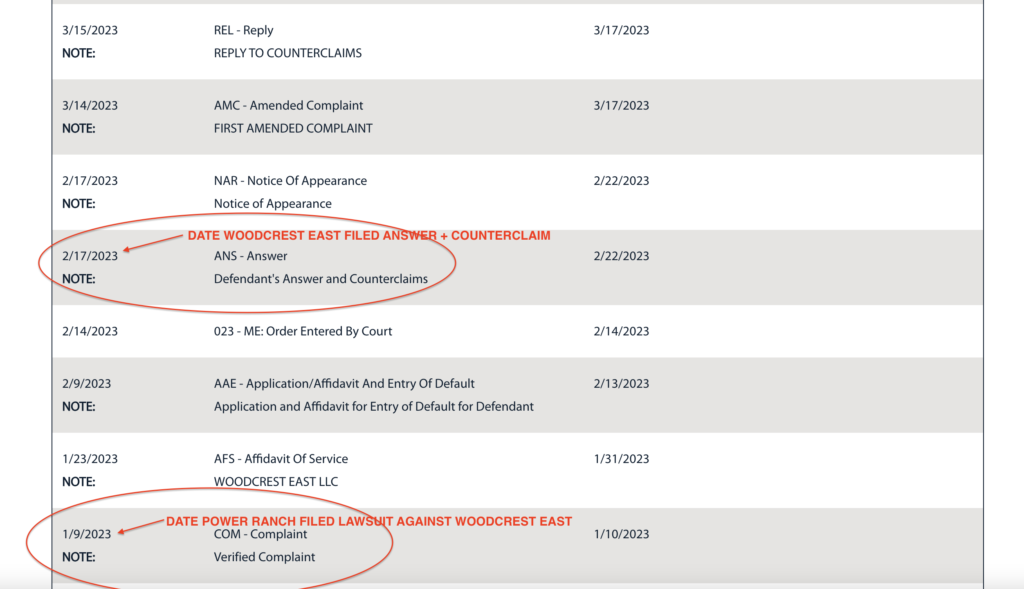
The Reporter's Question #3: Why weren't homeowners notified about the $13 million counter lawsuit?
POWER RANCH’S ATTORNEY RESPONSE:
“The Counterclaim is a matter of public record and has been discussed at multiple meetings.”
It is apparent that homeowners were not notified of the initial lawsuit and seemed equally surprised when they learned of the Counterclaim, NOT from the Board or the attorney but from a homeowner, on February 6th, 2024, who examined the financials and questioned a line item for LEGAL FEES in the amount of $176k spent in 2023.
Also, the Homeowners Alliance sent out a survey to 3,200 Power Ranch homeowners and 99% of the respondents said “No” when asked if they were aware of a pending lawsuit in our Community.
Additionally, it has been discovered that throughout 2023, all home sales where HOA Demand statements were obtained, Power Ranch did not disclose to the homeowner that the Association was in a pending lawsuit, although it is Arizona Law to do so.
Here are only a couple of examples, although we suspect every sale in 2023 may have included the same answer:
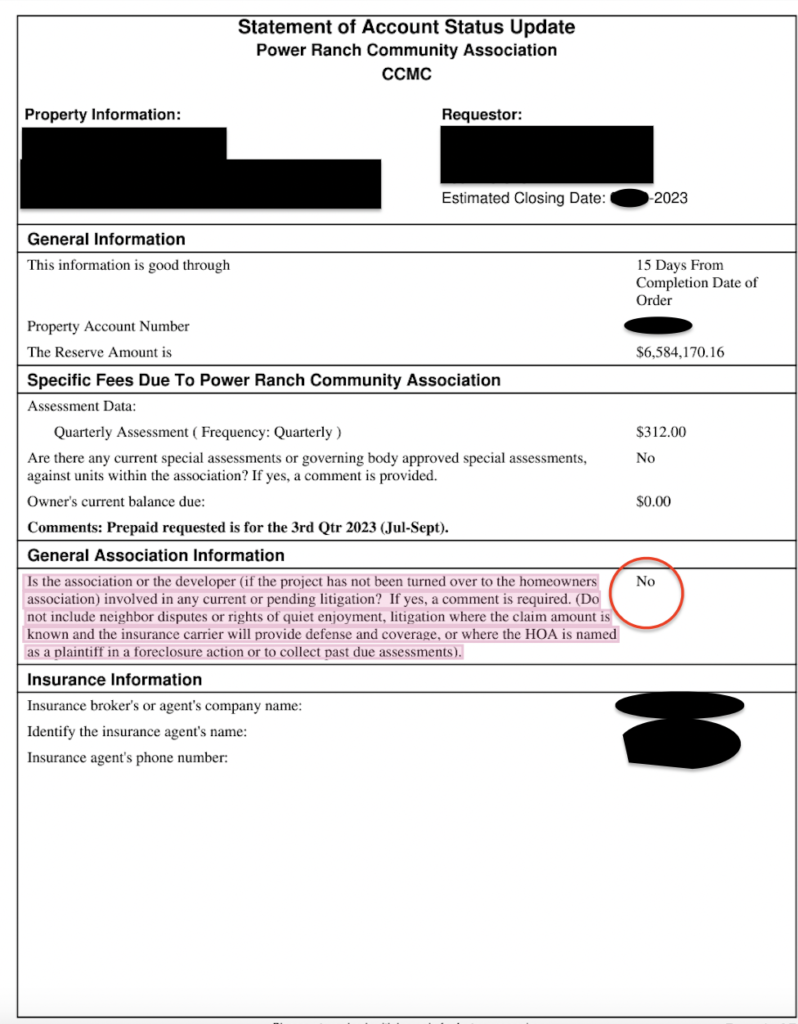
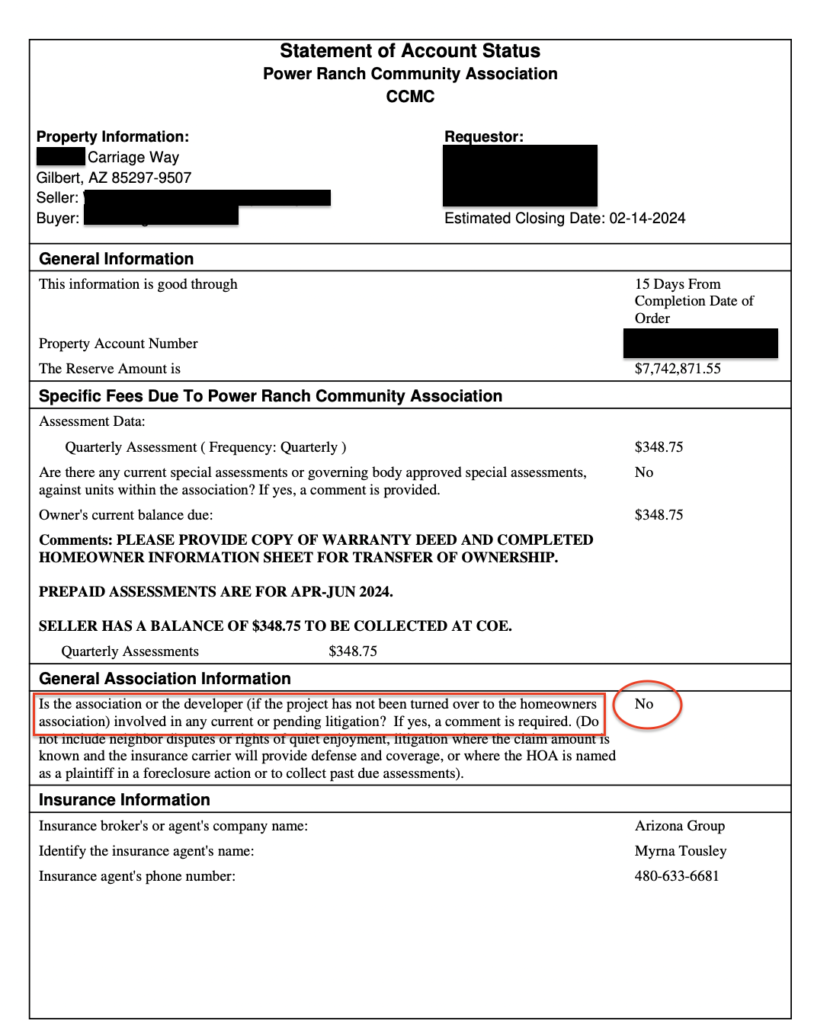
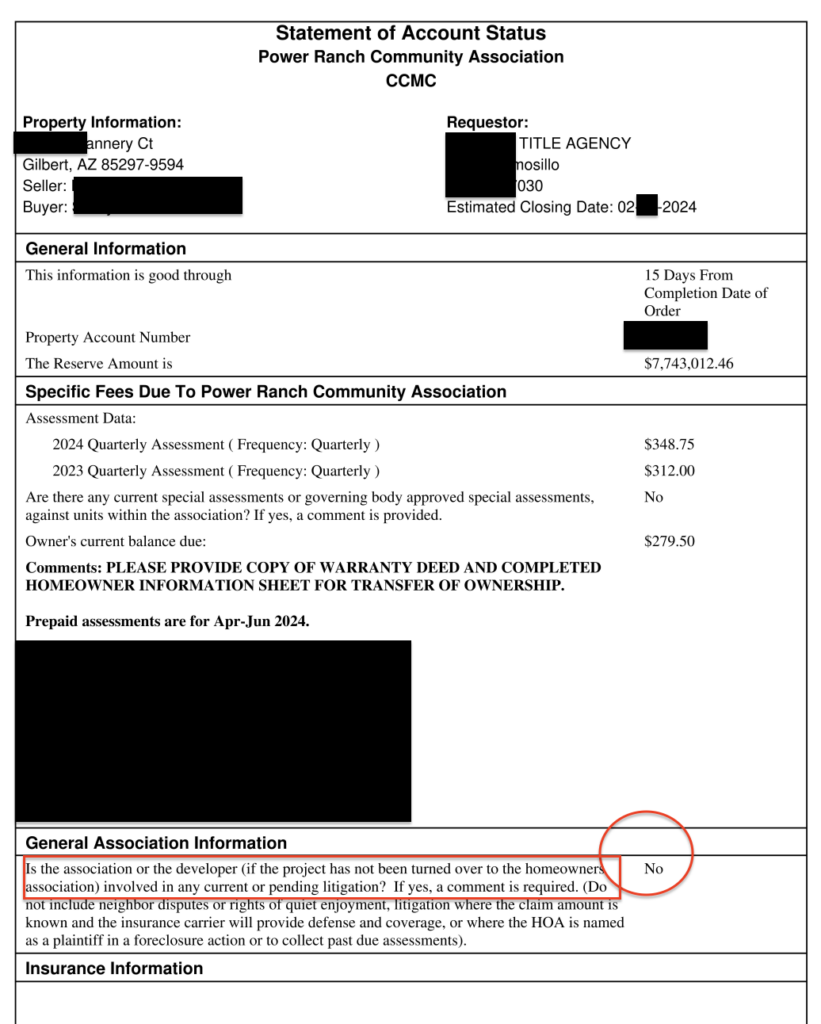
The Reporter's Question #4: Power Ranch HOA dues have gone up 11-percent in 2023 and 2024. Were these increases necessary because of all the money being spent on legal fees and community reserves dropping below 30-percent?
“Butler Hansen, which is a third-party CPA firm that handles the Power Ranch audits, presented an inflation impact presentation to the Power Ranch community on February 13, 2024. Part of this presentation discussed consumer price index (CPI) rates for the Phoenix market since 2019 (see chart below). In summary, the cost of all goods and services have increased almost 30%. Power Ranch is dealing with the same cost increases that all other community associations have been dealing with over the last five years.”
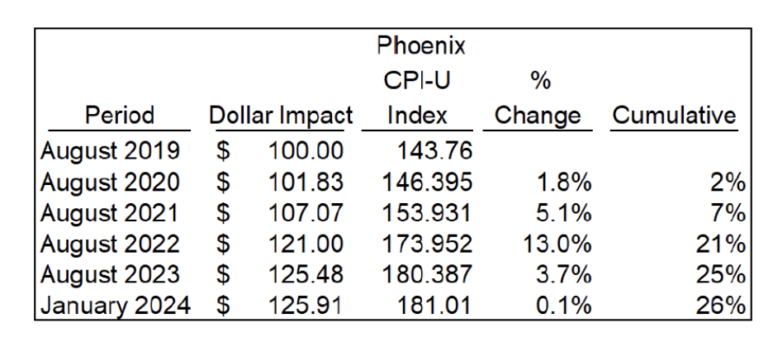
“The 2023 budget was approved at the September 26, 2022 meeting. The assessment increase for 2023 was increased by 11% due to major items such as utilities, insurance, contracted services, onsite services, and an increase to the reserve contribution as recommended by the reserve study.
The assessment for 2024 increased by 12% to keep up with inflation for major items such as utilities, insurance, contracted services, and landscape contract. This was not due to the money being spent on legal fees.
Power Ranch’s reserves have not dropped below 30% funded. Over the last several years the Board, with the assistance of the Budget and Finance Committee, has been increasing the contribution to the reserves knowing that inflation and costs of goods and services have increased. As outlined below, those increases have impacted the reserve balances favorably. The numbers below are the percent funded balances at the start of each year indicated.
- 2021: 58%
- 2022: 65%
- 2023: 73%
- 2024: 85%
“

Insulting homeowners’ intelligence yet again…let’s examine this sentence…
“In summary, the cost of all goods and services have increased almost 30%.”
So Mr. Ekmark was hoping that homeowners would take to the number listed under “cumulative” as the inflation rate? Another example how stupid he must believe homeowners are.
From 2023 to 2024, there was only 0.1% change in inflation, yet homeowner’s dues increased by 11% for the Master Association.
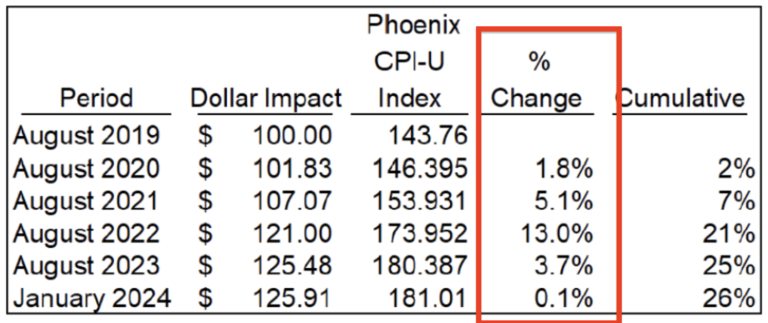
Associations’ dues should increase every 3-5 years at a rate of 3-5% for inflation in typical market cycles.
Here is a chart of the dues increases at Power Ranch over the years. As you can see every 3 years, approximately 3% increase to dues has been typical for Power Ranch. However, the past 5 years, there have been increases each year.
What is more troubling is that the Board and attorney have not disclosed the litigation and continue to blame it on inflation.
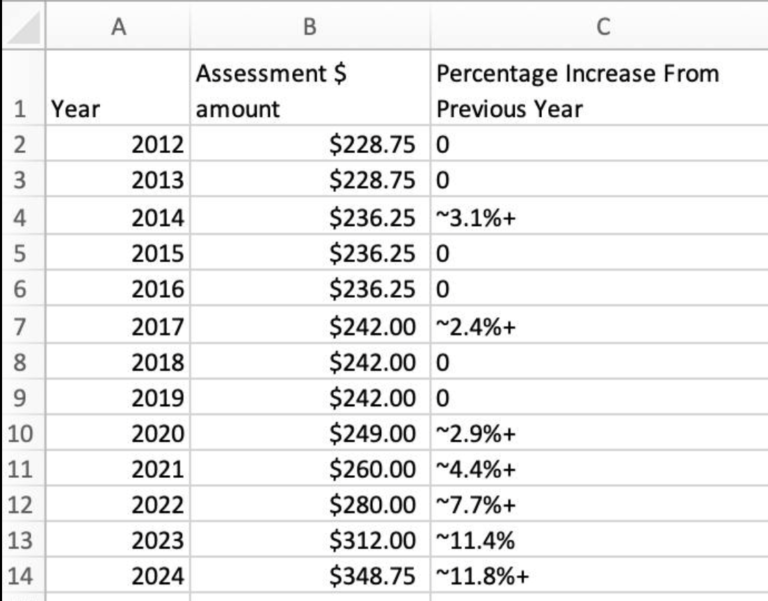
Let’s examine this sentence by Curtis Ekmark:
“The assessment for 2024 increased by 12% to keep up with inflation for major items such as utilities, insurance, contracted services, and landscape contract. This was not due to the money being spent on legal fees.”
Oh really?! How would one explain $24k legal fees budget but $174k spent then?
Here is the ledger of legal fees from January 2023 through January 2024:
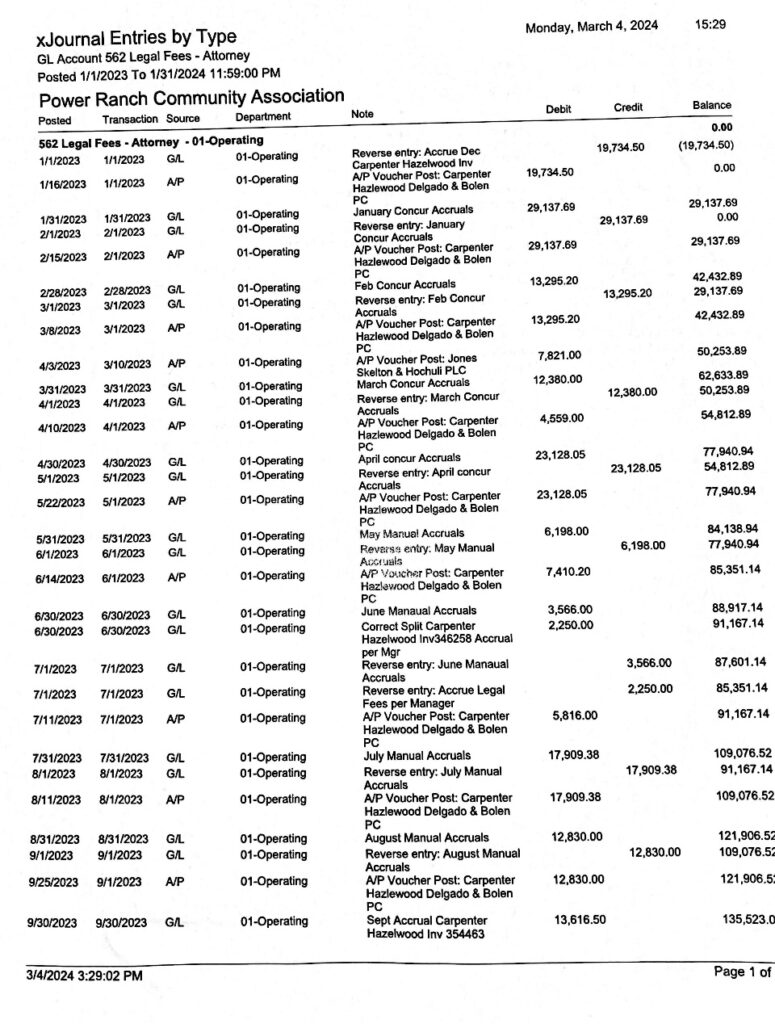
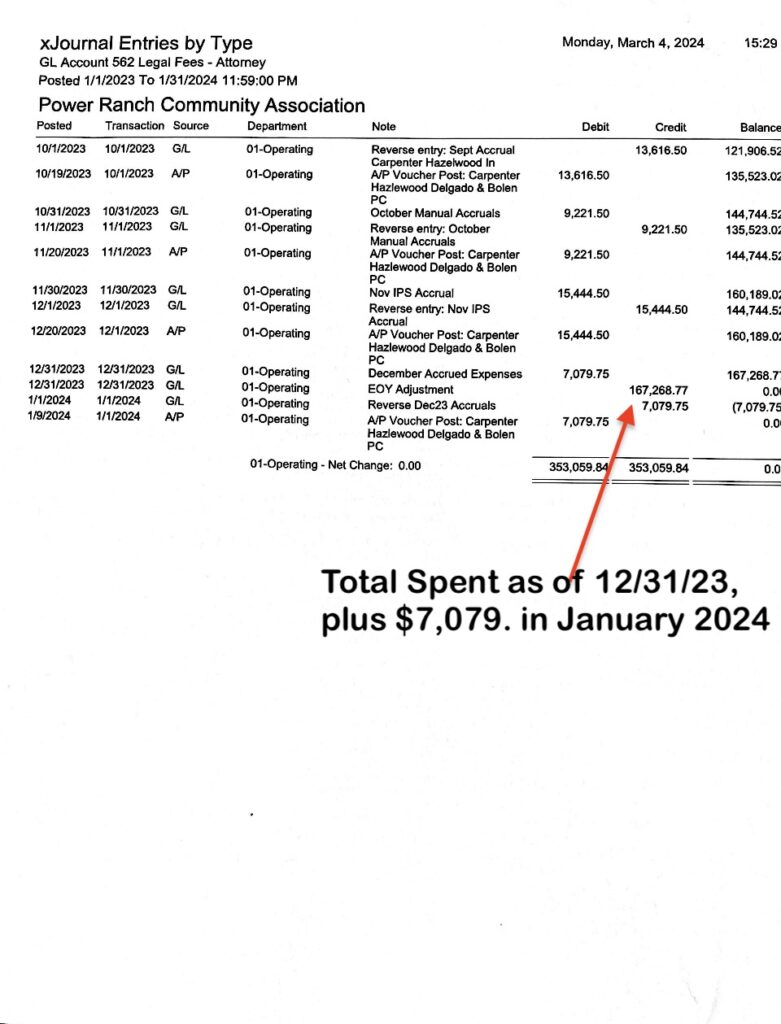

The Reporter's Question #5: What is the current status of the two lawsuits? Is there a chance of a settlement?
“The two active legal proceedings are currently pending and set for hearings within the next month, however, it takes both sides to reach a settlement. The Association has made significant efforts to resolve both cases.
With respect to Woodcrest East, both sides agreed to mediation, and the Developer did not move from his stated position during that meeting.
With respect to the homeowner generated ALJ (Administrative Law Judge) complaint, the Association offered to approve the modification that is the subject of the ALJ complaint. However, the homeowner refused to dismiss the case and is causing the Association to incur further time and expense litigating the matter. Nevertheless, the Association is willing to settle both cases and is hopeful the other parties will do so in good faith.”
Let’s examine this sentence by Curtis Ekmark:
“The Association has made SIGNIFICANT efforts to resolve both cases.”
Once again, considerable efforts are employed to actually deprive homeowners of any respite and prevent them from finding a resolution, the only choice Curtis Ekmark and his law firm have provided homeowners is through legal means, resulting in more billable hours.
While you may have heard about the Woodcrest East case, you may not be familiar with the Administrative Law Judge case. It is important to mention that this case was directly sent to the insurance company for resolution, completely bypassing the Board. Why? According to Nick Ferre, CCMC VP of Operations, when the Association is sued, it is treated as if it were a “trip and fall” incident, which requires the immediate involvement of the insurance legal team to resolve. The Board admitted to not knowing about the case until the homeowner questioned the attorney, and only when a couple of the Board Members brought it up and pointed out that it is NOT similar to a trip and fall case because there is no immediate threat and an emergency meeting can be called to discuss it. Consequently, the Board of Directors was not informed about the case or given approval for insurance handling. Please note that each triggered insurance claim incurs a $10,000 deductible for the Association. Furthermore, we have discovered that Carpenter Hazelwood Delgado Bolen, the law firm Curtis Ekmark is associated with, is also handling the Power Ranch insurance claims.
Fact-check here.
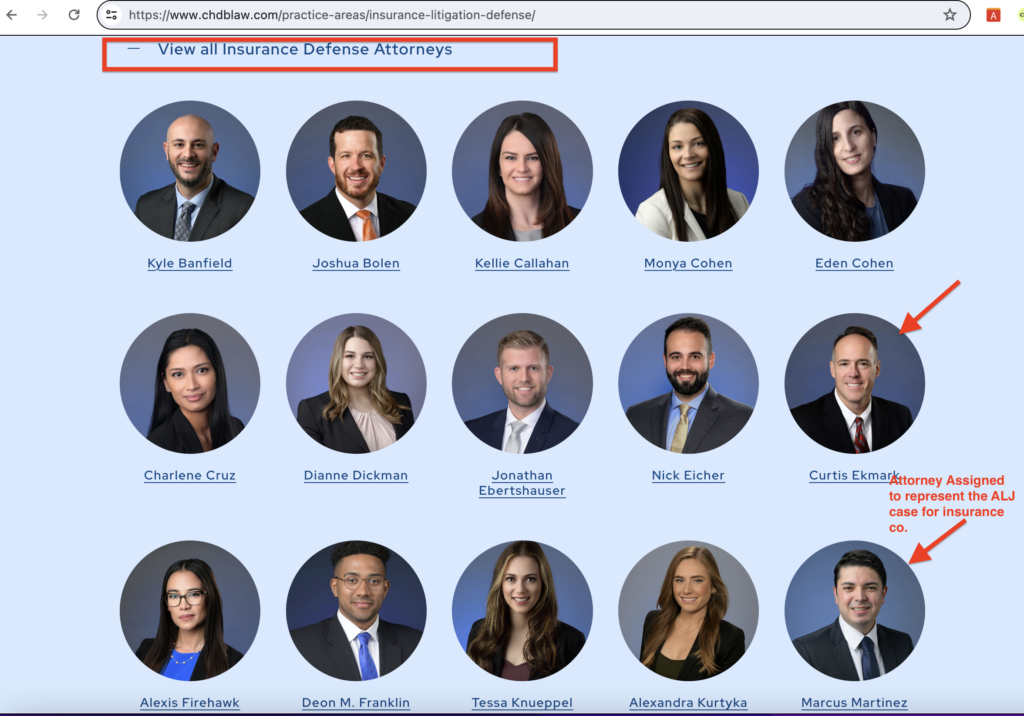
Also found on their website, under HOA litigation services, Curtis Ekmark and Kyle von Johnson. Ekmark was the attorney who filed the initial lawsuit and Kyle von Johnson is now representing the insurance company on the Counterclaim portion of the Woodcrest East lawsuit, both from the same law firm.
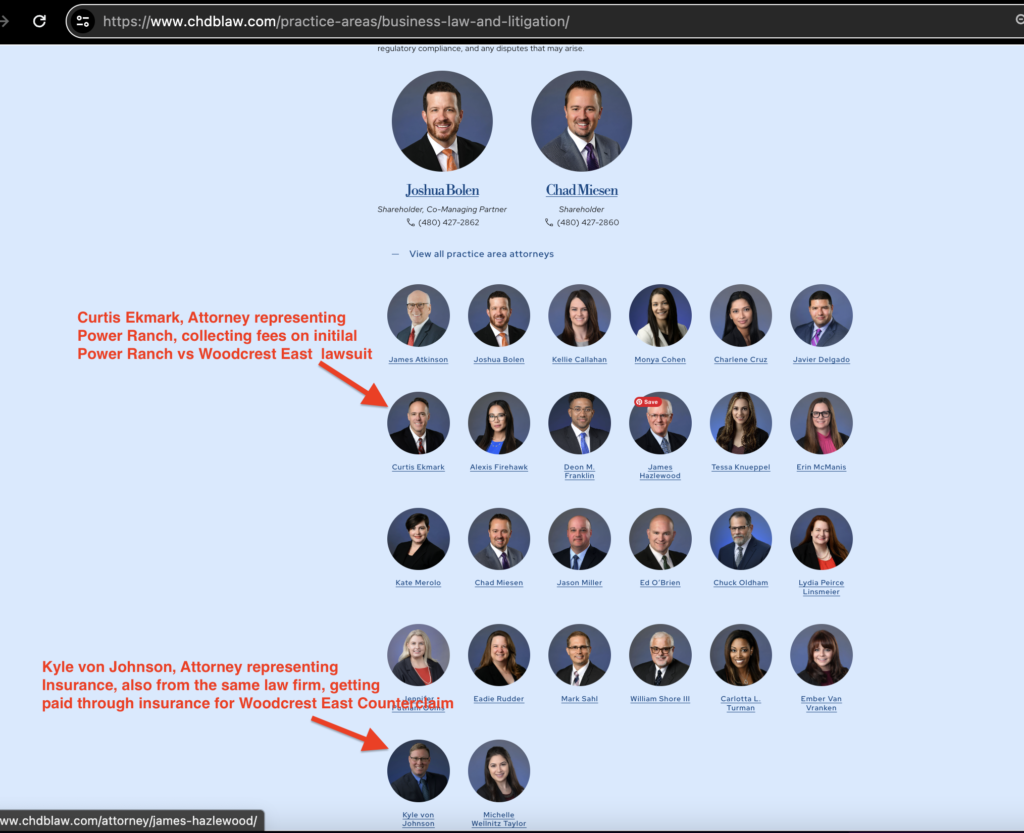
On March 5th, 2024, CHDB single-handedly authorized a homeowner’s complaint to be turned over to insurance defense without approval from the Board when the matter could have been resolved internally. Again, CHDB gets paid each time Power Ranch has any legal issues; however, it is up to the Board to decide which case can be handled at the Board level and which case may require legal intervention. In this situation, CHDB chose to initiate an insurance claim, which they were able to bill the insurance company $10k, without Board approval.
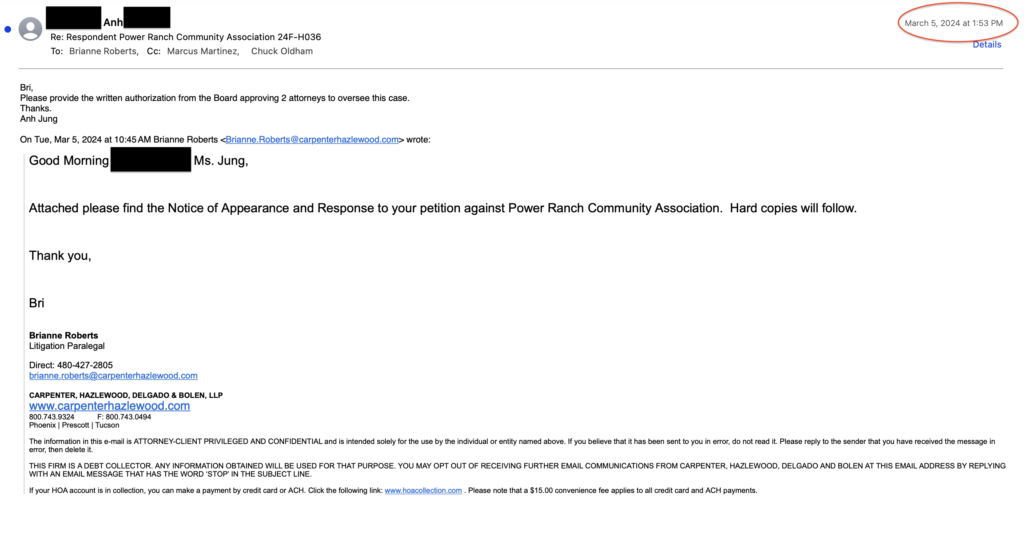


The Reporter's Question #7: Is there a chance this lawsuit drains all of the community funds?
POWER RANCH’S ATTORNEY RESPONSE:
“Litigation is always unpredictable for all sides. However, in order to mitigate the risk of the Developer claiming damages, the Association has not stopped the Developer from building and has offered to hold off on enforcing the Declaration until this case is over. Thus, the Developer will be able to operate by owning all the Dwelling Units and renting them all out unless and until a Court rules that they do not have a legal right to do so.”
The Master Association’s Reserve Balance, YTD 1/31/24 was $6,717,044.80.
The counterclaim is $13 Million Dollars. We believe the insurance policy has a coverage limit between $2-$4M per occurrence.
We have incurred approximately $200,000.+ in legal fees thus far.
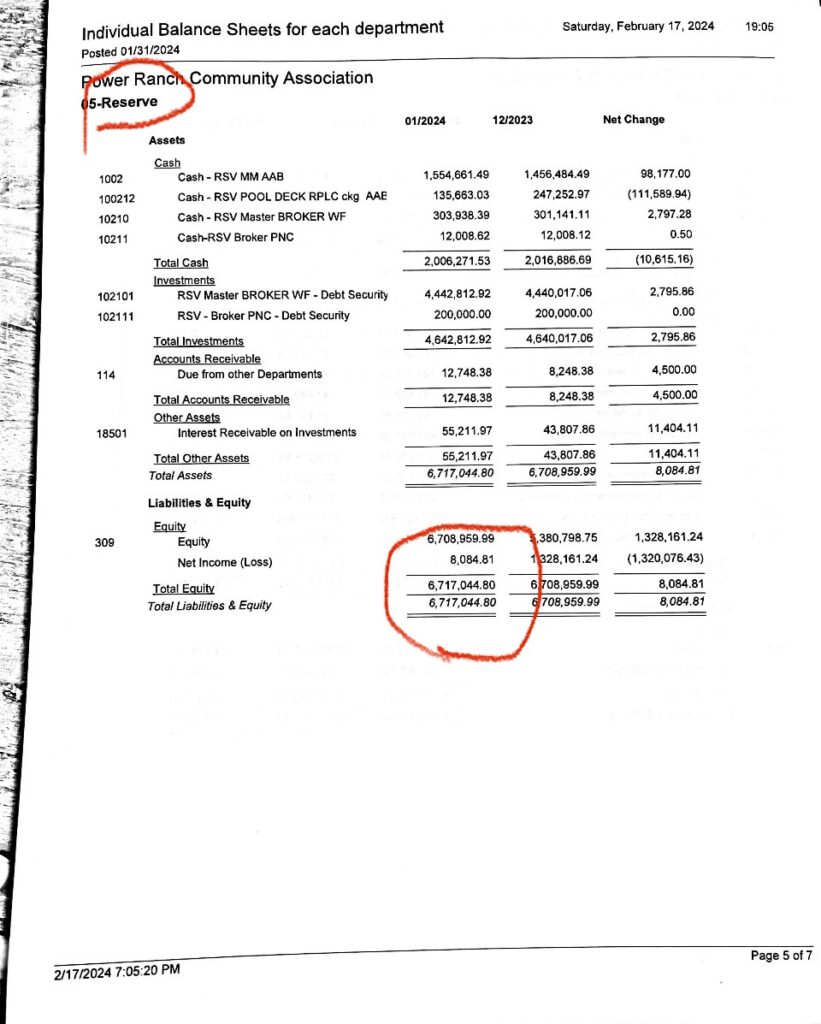
The Reporter's Question #8: Are there any plans to provide an update to homeowners about the current financial situation of the community and why so much money has been spent on legal fees?
POWER RANCH’S ATTORNEY RESPONSE:
“There are multiple ways that homeowners are updated about the current financial situation in the community.
- The community’s financial statements can be viewed by homeowners at any time by logging into the Power Ranch website.
- Residents are advised of the monthly board meetings where they can attend and hear the monthly board treasurer’s reports pertaining to the association finances.
- The Finance Committee Chair reviews monthly financials and the Finance Committee discusses financials and budgets at their open meetings.
- At the Annual Meeting each year, a recap of the prior year’s financial summary is shared. Earlier this year, a Financial Town Hall was held where the third-party auditor, Paul Hansen, CPA from Butler Hansen, discussed the community’s financial state.
Legal expenditures were for ongoing matters and matters that have concluded. We are unable to disclose specifics of concluded matters due to non-disclosure settlement agreements.”
The above statement is one that each individual homeowner should determine to be accurate, or not. For those who have served or attended Committees, if you have known them to be open meetings where your concerns are heard and addressed, several homeowners have spoken up recently and the response made above by Ekmark is far-fetched and seems to be out of touch with reality.
board meetings budget and finance HOA Homeowners Power Ranch Gilbert
Last modified: May 14, 2024



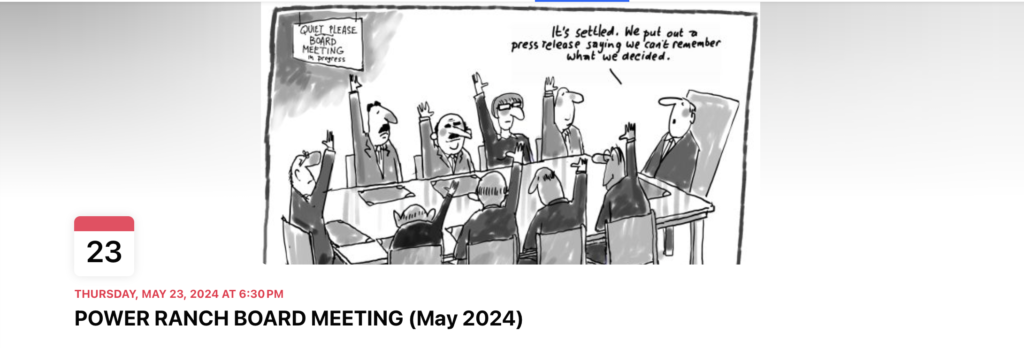

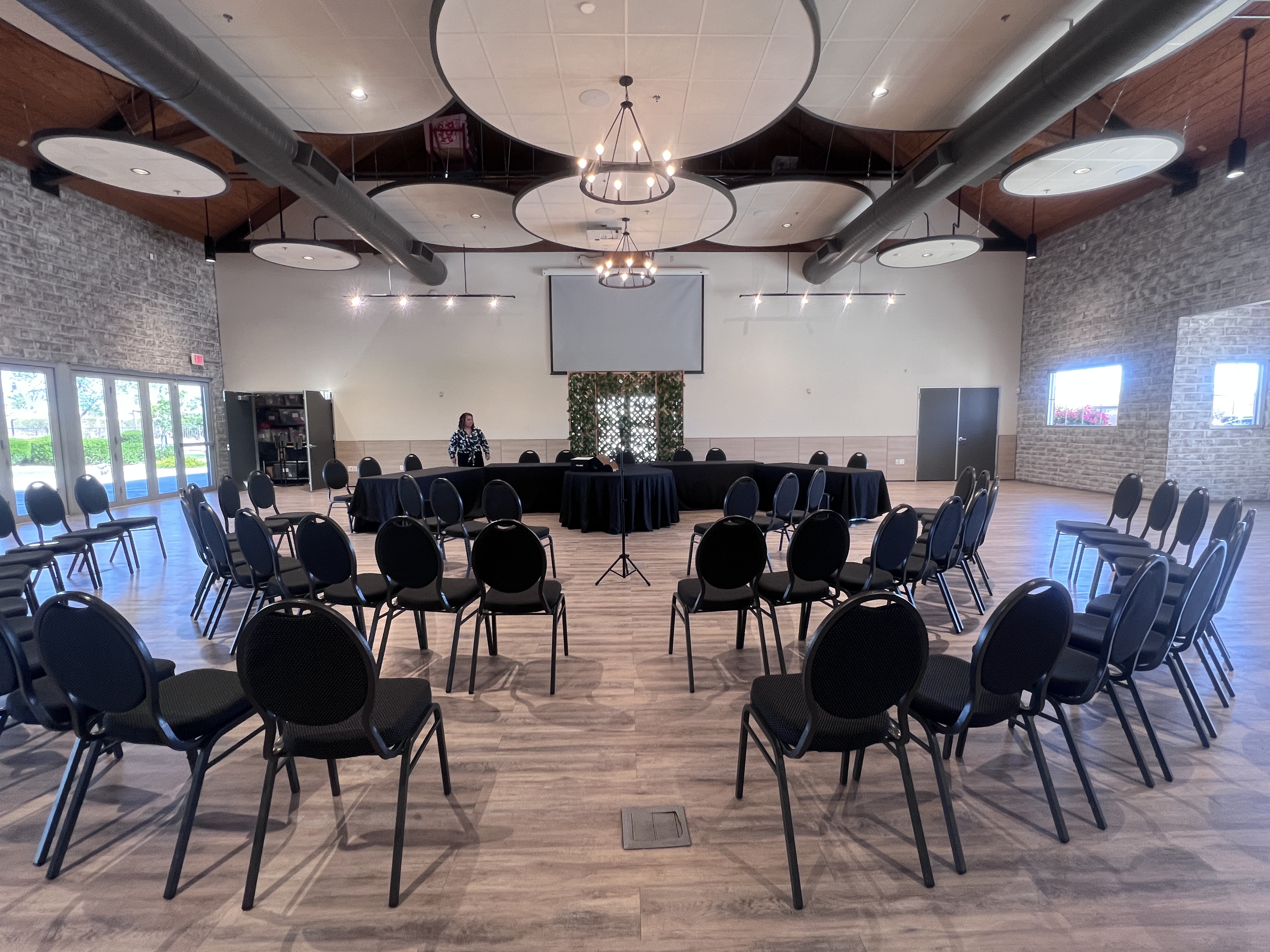
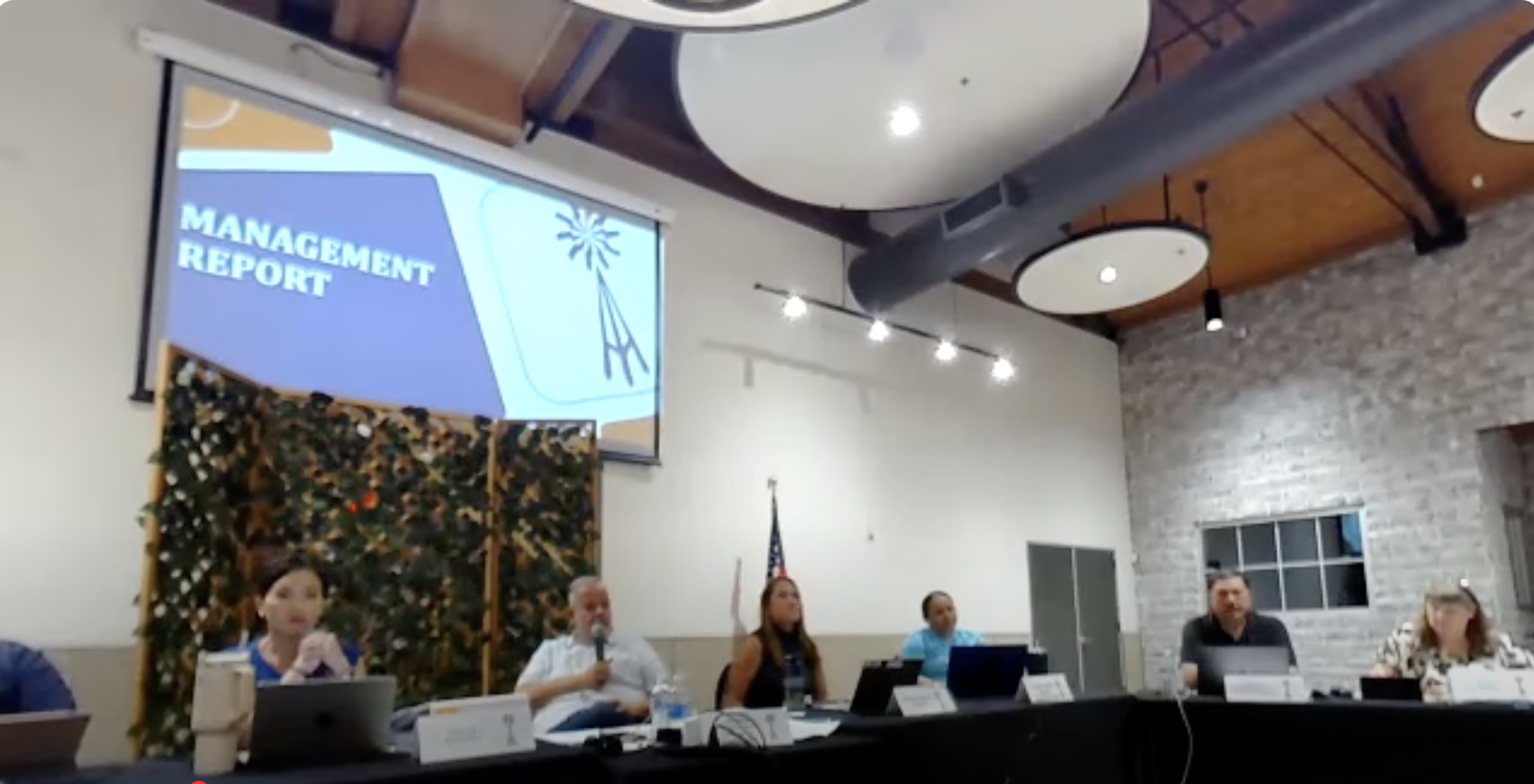
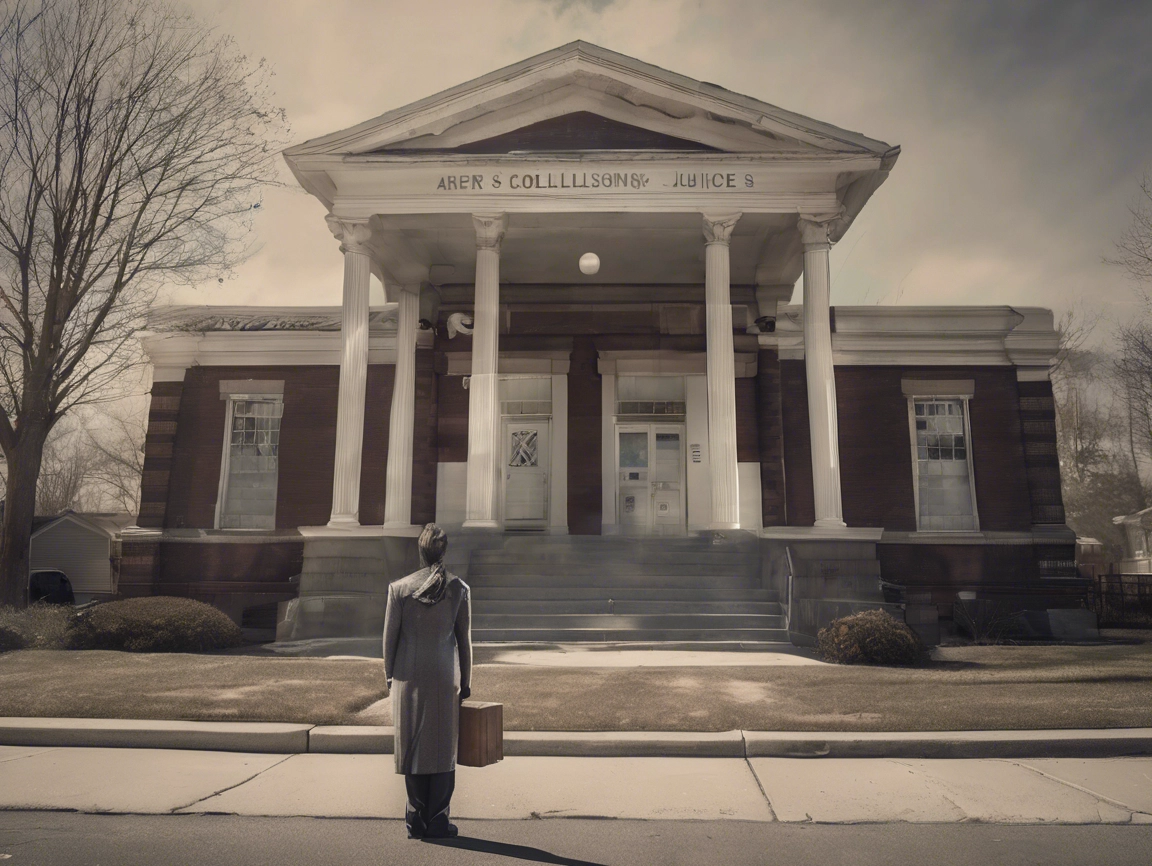


CCMC is a bunch of crooks….we’ve never entertained a new management company EVER! They need to go and us as a community need to pay debts owed to our previous contractors. This community needs to wipe the slate clean. The mismanagement and collusion with the board needs to stop.